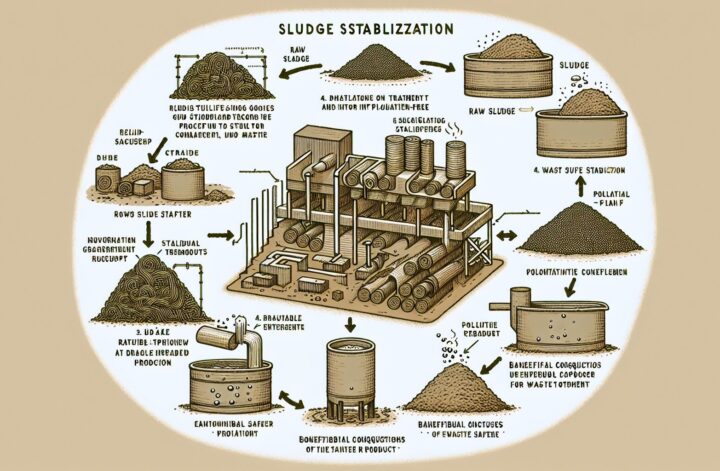In the global quest to shrink carbon footprints, anaerobic digestion stands tall as a potent weapon. By ingeniously turning organic waste into renewable energy, this technology is redefining waste treatment strategies and energy models across the world. In the heart of its operation lie detailed and complex processes whose higher aim is turning waste into wealth.
This article will focus on the fascinating world of anaerobic digestion, starting from its role in organic waste treatment and working through the resultant production of renewable energy.
An Introduction to Anaerobic Digestion
Anaerobic digestion is a biological process in which organic matter, also known as feedstock, is broken down by various microorganisms in the absence of oxygen. This process is naturally occurring and is common in wetlands, buried organic material, and the gastrointestinal tract of animals. Today, this process has been specially adapted for the treatment of organic wastes and the production of energy in the form of biogas[^1^].
Organic Waste and its Treatment through Anaerobic Digestion
Accumulation of organic waste from industrial processes, animal farming, and household waste poses significant waste management challenges. Anaerobic digestion offers a waste treatment strategy that not only manages but also utilizes waste, converting it into a renewable source of energy.
The process of anaerobic digestion involves several stages, ranging from hydrolysis through acidogenesis, acetogenesis, and finally methanogenesis. This decomposition chain involves moving from complex organic molecules to simpler ones, with the final product being a mixture of gases, primarily methane and carbon dioxide.
Energy Generation from Organic Waste
Anaerobic digestion doesn’t just stop at dealing with waste; it’s about energy generation too. It offers a renewable source of energy in the form of biogas, which consists mostly of methane and carbon dioxide and can be used directly for heating or converted into electricity and heat through a process known as Combined Heat and Power (CHP)[^2^].
Additionally, degradation of organic material in a controlled environment, such as that provided by an anaerobic digester, drastically reduces the emission of greenhouse gases, therefore contributing to efforts at climate change mitigation.
The Future of Anaerobic Digestion
Anaerobic digestion is more than just a technological solution for a given problem; it is a model for a sustainable future. It represents a cyclic journey from waste to energy, embodying the principle of circular economy models in which waste becomes an essential input.
Recent advancements in anaerobic digestion technology include Biogas upgrading, a process where the methane content in the gas is increased to make it closer to natural gas quality, thereby enhancing its value and usability[^3^]. High-rate anaerobic digesters, designed to handle high organic loading rates, are also gaining popularity due to their ability to generate more energy and treat more waste.
Although the implementation challenges of anaerobic digestion pipelines exist, an increasing global consciousness about its long-term benefits is fueling its continued growth and development.
To improve current systems and ensure optimum performance, more research into understanding the microbiology of anaerobic digestion, supplementing trace elements for increased biogas yield, and overcoming potential barriers such as ammonia or sulfide toxicity, is crucial. With constant innovation and an increase in its adoption, anaerobic digestion has the potential to make significant strides in waste management and renewable energy production globally.
Conclusion
Anaerobic digestion is an evolving discipline with vast opportunities for improvement and scaling. It is an essential technology towards creating a sustainable and greener world by converting organic waste into renewable energy. By harnessing the collective benefits of improved waste treatment, reduced greenhouse gas emissions, and energy production, anaerobic digestion holds the promise of a future where nothing goes to waste.
[^1^]: U.S. Environmental Protection Agency. (2020). Basics of Anaerobic Digestion. [online] Available at: https://www.epa.gov/anaerobic-digestion/basics-anaerobic-digestion-ad [Accessed 10 Oct. 2021].
[^2^]: Biogas World. (2020). Combined Heat and Power (CHP) Generation. [online] Available at: https://www.biogasworld.com/services/powergen/ [Accessed 10 Oct. 2021].
[^3^]: European Biogas Association. (2020). Green gases. [online] Available at: https://european-biogas.eu/biogas/biomethane/ [Accessed 10 Oct. 2021].




